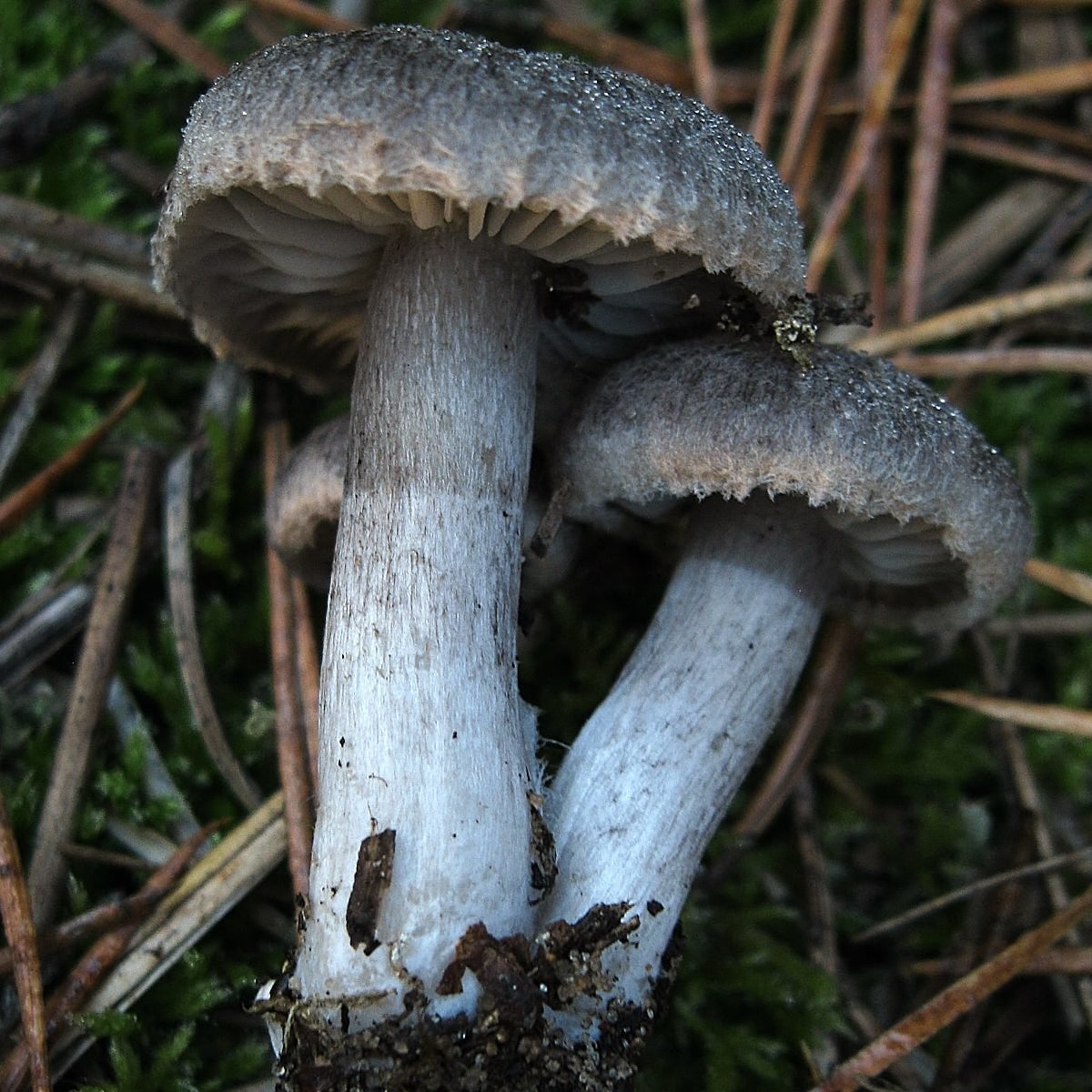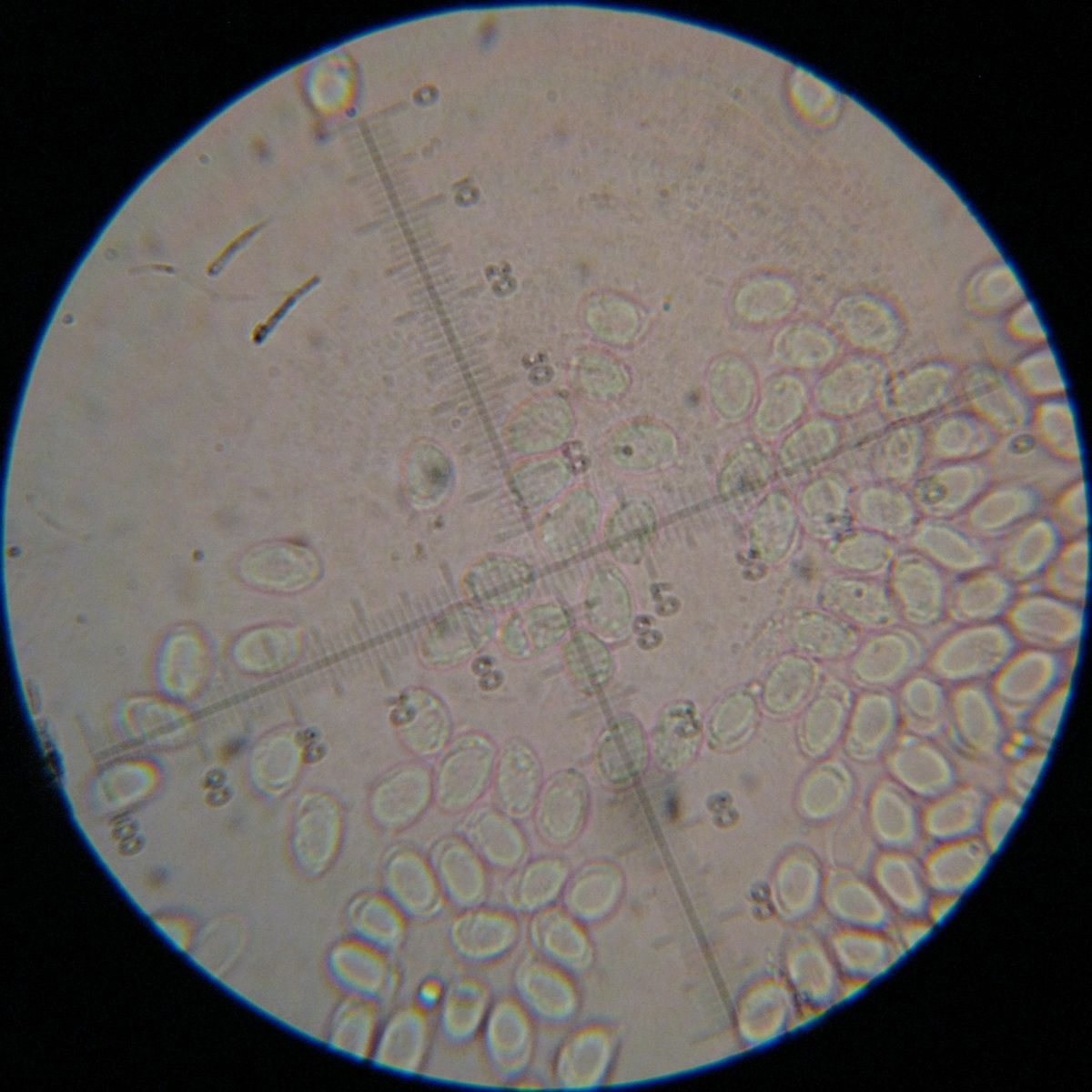Sad Row (Tricholoma triste)
- ផ្នែក៖ Basidiomycota (Basidiomycetes)
- ផ្នែករង៖ អាហ្គារីកូម៉ីកូទីណា (Agaricomycetes)
- ថ្នាក់៖ Agaricomycetes (Agaricomycetes)
- ប្រភេទរង៖ Agaricomycetidae (Agaricomycetes)
- លំដាប់: Agaricales (Agaric ឬ Lamellar)
- គ្រួសារ៖ Tricholomataceae (Tricholomovye ឬ Ryadovkovye)
- ពូជ៖ Tricholoma (Tricholoma ឬ Ryadovka)
- ប្រភេទ: Tricholoma triste (Sad Row)
:
- Gyrophila tristis
- Tricholoma myomyces var. sad

The specific epithet of the species Tricholoma triste (Scop.) Quél., Mém. soc. Emul. Montbeliard, Ser. 2 5:79 (1872) comes from Lat. tristis, which means sad, sad. I did not find the reason for choosing such an epithet due to the lack of access to the original source, where the species is described.
ក្បាល 2-5 cm in diameter, in youth semicircular or bell-shaped, in age from flat-convex to prostrate, often with a tubercle, densely pubescent, tomentose. Hat color is dark grey. The edge of the cap is noticeably pubescent, much lighter than the cap, almost white or light fawn.
ផូស white, whitish, pale-grayish.
ក្លិននិងរសជាតិ from indistinguishable to weak floury.
កំណត់ត្រា notched-adherent, relatively wide, medium-frequent, pale grayish, possibly with more gray dots along the edge.
ម្សៅ spore ស។
វិវាទ hyaline in water and KOH, smooth, ellipsoid to oblong, 5.5-9.7 x 3.3-5.3 µm, Q from 1.3 to 2.2 with average values about 1.65+-0.15;

ជើង 3-5 cm long, 4-10 mm in diameter, cylindrical, white, grayish, pale-grayish, with dark gray scales, from scattered to abundant.
The sad row grows in autumn, usually September-October, in coniferous forests with pine and / or spruce. There is an opinion [1] that the species can grow with other types of trees, including deciduous ones, without specifying a list.
- Earthy Row (Tricholoma terreum). Outwardly similar rowing, it differs in a leg without dark scales and a less pubescent felt edge.
- Row of Bona (Tricholoma bonii). Outwardly very similar rowing, differs in the absence of a light edge of the cap.
- Silver Row (Tricholoma scalpturatum). A similar row is distinguished by a lighter color, a scaly cap, a pronounced floury smell, a leg without scales and yellowing on damage and in old age.
- Row silver gray (Tricholoma argyraceum), Fibrous row (Tricholoma inocybeoides). Similar rows are distinguished by a scaly cap, a pronounced floury smell, a leg without scales and yellowing on damage and in old age.
- ការឡើងក្រហមនៃជួរ (Tricholoma orirubens). Differs in the pulp and plates turning pink with age.
- Ryadovka black-scaled (Tricholoma atrosquamosum), Slightly rough row (Tricholoma squarrulosum). They differ in the scaly nature of the hat.
- Tricholoma basirubens. They differ in the scaly nature of the cap and noticeably reddening flesh at the base of the leg.
Edibility is unknown. When compared with closely related species, after recent studies, the earthy row was recognized as inedible, and the silver rows were edible, so one can only guess on this topic.









